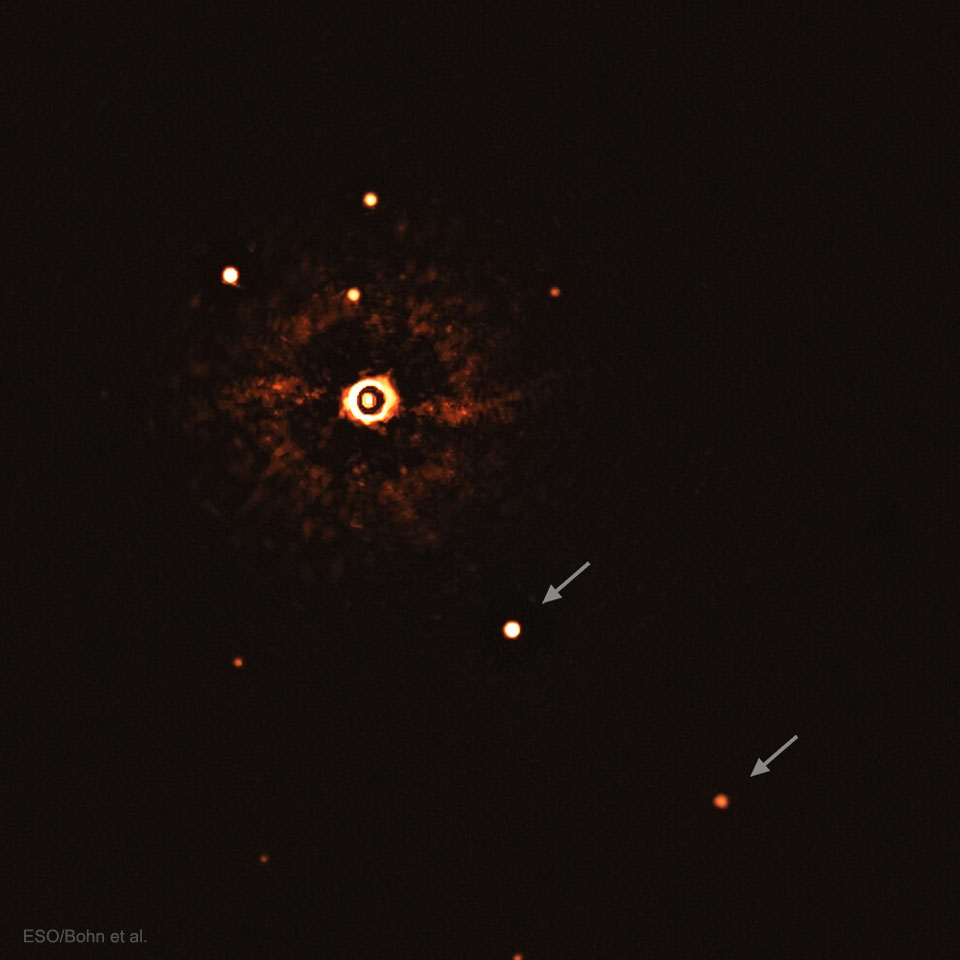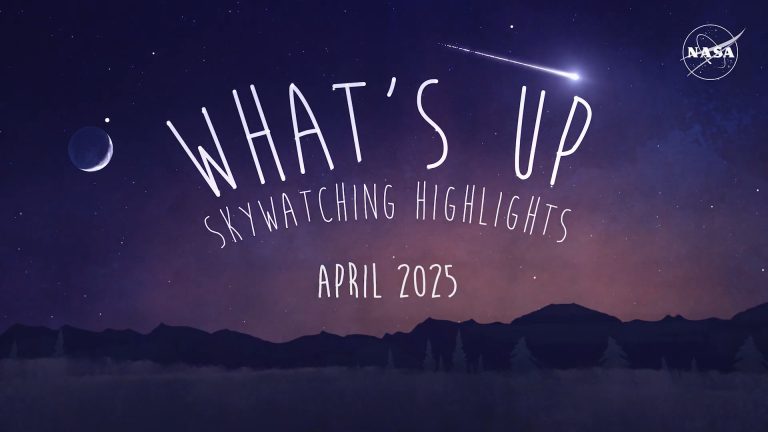2020年8月18日
TYC 8998-760-1: Multiple Planets around a Sun Like Star
Image Credit: ESO, A. Bohn et al.
Explanation: Do other stars have planets like our Sun? Previous evidence shows that they do, coming mostly from slight shifts in the star’s light created by the orbiting planets. Recently, however, and for the first time, a pair of planets has been directly imaged around a Sun-like star. These exoplanets orbit the star designated TYC 8998-760-1 and are identified by arrows in the featured infrared image. At 17 million years old, the parent star is much younger than the 5-billion-year age of our Sun. Also, the exoplanets are both more massive and orbit further out than their Solar System analogues: Jupiter and Saturn. The exoplanets were found by the ESO’s Very Large Telescope in Chile by their infrared glow – after the light from their parent star was artificially blocked. As telescope and technology improve over the next decade, it is hoped that planets more closely resembling our Earth will be directly imaged.
Experts Debate: How will humanity first discover extraterrestrial life?
Tomorrow’s picture: sun spin
TYC 8998-760-1:类太阳恒星周围的多行星系统
影像提供: ESO, A. Bohn et al.
说明: 其他类太阳恒星周围也有行星吗?先前的观测说“的确是”,证据则主要来自行星绕行母星时,所造成的微小星光频移。而近来更首次直接拍摄到,环拱在类太阳恒星周围的2颗行星。在这张主题红外光影像里,编录号为TYC 8998-760-1的这对系外行星,特别用箭头加以标示。它们母星的年龄约为1千7百万年,远小于太阳的50亿年高龄。此外,这2颗系外行星的质量,皆大于太阳系的巨行星木星和土星之质量,轨道也更大。这些系外行星的发现,是由智利的欧南天文台极大望远镜,在遮掩母星的星光后,直接观测行星的红外辉光所得。在接下来的10年之中,随着望远镜和科技进步,预期能直接拍摄到类似地球的系外行星。
专家辩论:人类将如何首先发现外星生命?
明日的图片:sun spin








额